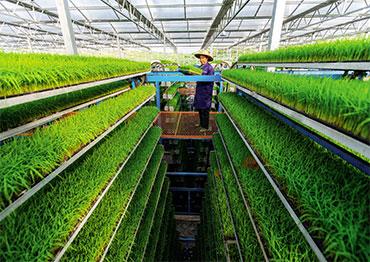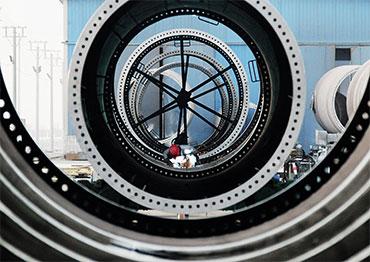What makes the 14th FYP different is that 2021 is seen to have major historical significance and marks a new era for China’s development.
When Chinese President Xi Jinping took office in 2012, the leadership launched a set of goals known as the Two Centenaries, that is to build China into a xiaokang society, or “a moderately prosperous society” by the centenary of the founding of the CPC in 2021, and to build China into a “modern socialist nation” around the centenary of the founding of the PRC in 2049.
In quantitative terms, the first centenary goal is defined as doubling the GDP and per capita income of 2010, which was achieved in 2020. It is with these achievements that China declared in late 2020 that it had eradicated extreme poverty.
Therefore, 2021 marks the first year in which China will move on to its second centenary goal. Under the 14th FYP and the LongRange Objectives approved during the 2021 NPC session, China laid out a two-stage development blueprint, which aims to achieve “basic socialist modernization” by 2035 and to establish China as a “strong and modern socialist nation” by 2050.
After four years of the Trump administration in the US and a global pandemic during which the relationship between China and the US continued to deteriorate, 2021 is also perceived to be at the beginning of a more challenging time as the West is becoming increasingly hostile.
“As China now has entered a new phase of development, it needs an alternative development model and a new set of targets,” Xin Ming said. “It means that the 14th FYP will serve as a trailblazer that lays the foundation for China’s future development in the next 15 to 30 years.”
According to Zheng Yongnian, a major shift in China’s future policy is a focus on the quality rather than the quantity of its development. Unlike past FYPs and other long-term plans which centered on GDP growth to the exclusion of other indicators, the 14th FYP does not include any specific five-year growth target.
Although the Chinese government released an annual growth target of no less than 6 percent for 2021, it is a rather moderate figure as China’s growth rate in 2021 is widely projected to be over 8 percent.
“Instead of a gross GDP growth, the 14th FYP outlined a set of comprehensive indexes, which suggests the plan is more explorative with a more flexible approach,” said Zheng.
According to Ma Liang, a focus of China’s future policy will be on regional and rural-urban income disparity. A major theme of the 14th FYP is to ensure the sustainability of China’s poverty alleviation achievements and the rejuvenation of rural society.
Another policy priority is the promotion of an “innovation-driven” development model, which would be key to achieving modernization. The 14th FYP reiterates the importance of the new “dual circulation” development mode, where domestic and foreign markets can boost each other, with the domestic market as the mainstay.
China’s central leadership launched the concept of dual circulation in mid-2020. While the strategy was seen to address the impact of the global coronavirus pandemic, it is now clear that the new doctrine will play a major role in China’s future economic policy, as China is increasingly concerned over the external challenges it faces.
“The dual circulation strategy stems from the dual challenges from both home and abroad,” Yan Yilong said. “China’s next challenge will be how to further connect its domestic market to the global economy.”

 Old Version
Old Version



